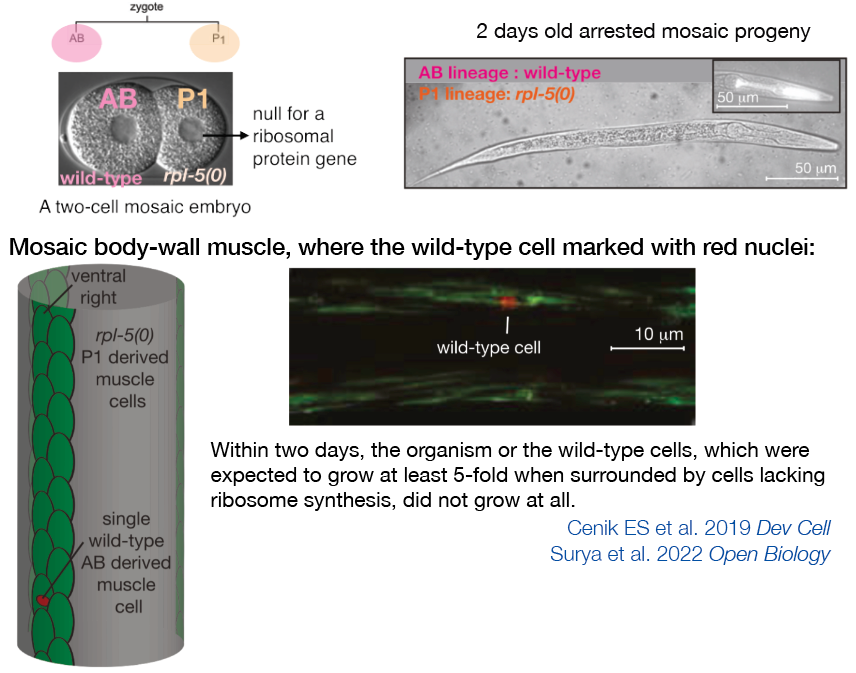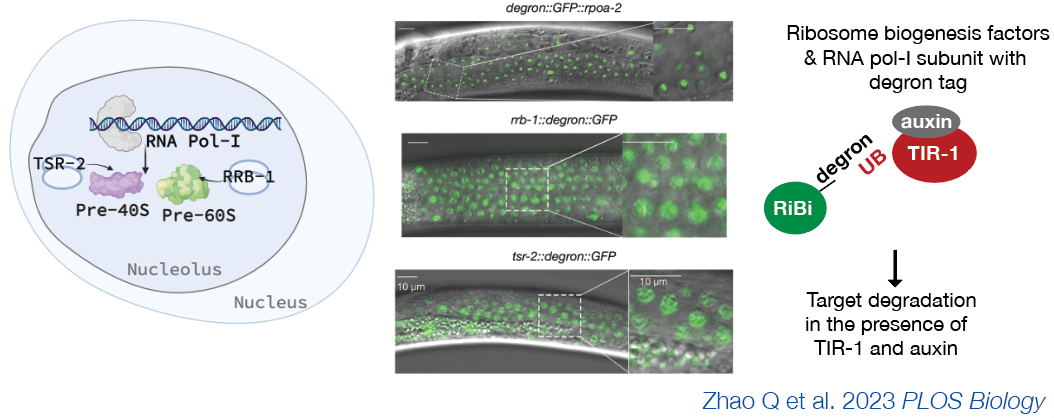A Ribosome Synthesis Checkpoint: Impacts on Post-Embryonic Growth
When we generate mosaic embryos with cells that are both capable and incapable of new ribosome synthesis, these embryos develop up to an early larval stage, drawing upon the deposition of maternal ribosomes. However, their postembryonic growth is stunted. Within two days, even the wild-type cells, which, under typical conditions, would grow at least 5-fold when surrounded by cells that lack ribosome synthesis, exhibit no growth. This suggests that if certain cells within the organism don't produce ribosomes, the growth of the entire organism is halted. We term this phenomenon the "ribosome synthesis checkpoint," distinct from the insulin pathway-mediated nutrition checkpoint. This checkpoint serves as a control mechanism, ensuring that ribosomes, essential for protein synthesis and cellular function, are produced as and when needed throughout the organism.
Questions
How do organisms inhibit ribosome activity in regular cells?
What controls the checkpoint that is independent of nutrition?
What triggers the signals and forces transmitted between cells?
A Key Role for Epidermal Secretion: Regulating Protein Translation and Inducing Reversible Quiescence in the Organism
Controlling When and Where Ribosomes are Made
When ribosome synthesis is intentionally suppressed in tissues of equal volume, body proportions remain consistent, suggesting a coordinated regulation of body ratios. Additionally, the epidermis alone can initiate a reversible quiescent response that is independent of the organism's nutritional status. In this state, the worms can survive and recover for up to five days.
Inhibiting ribosome synthesis in the epidermis halts protein synthesis and growth throughout the organism
When new ribosome synthesis is specifically inhibited in the epidermis, the protein synthesis across the entire organism is significantly reduced, leading to a substantially stunted growth, which is reversible. Interestingly, during epidermis-specific ribosome synthesis inhibition, many secreted proteins and dense core vesicle components show increased abundance at the protein level. Furthermore, the reversible growth checkpoint can be partially reversed when the secretion of dense core vesicles or a secreted protein called retinoic acid binding protein (FAR-1) is reduced specifically in the epidermis.
Questions
What causes ribosomes to remain inactive during quiescence?
How is the dense core vesicle pathway activated in response to ribosome synthesis inhibition?



